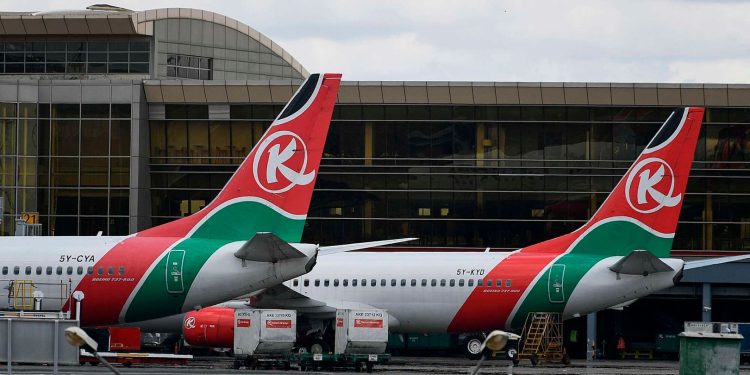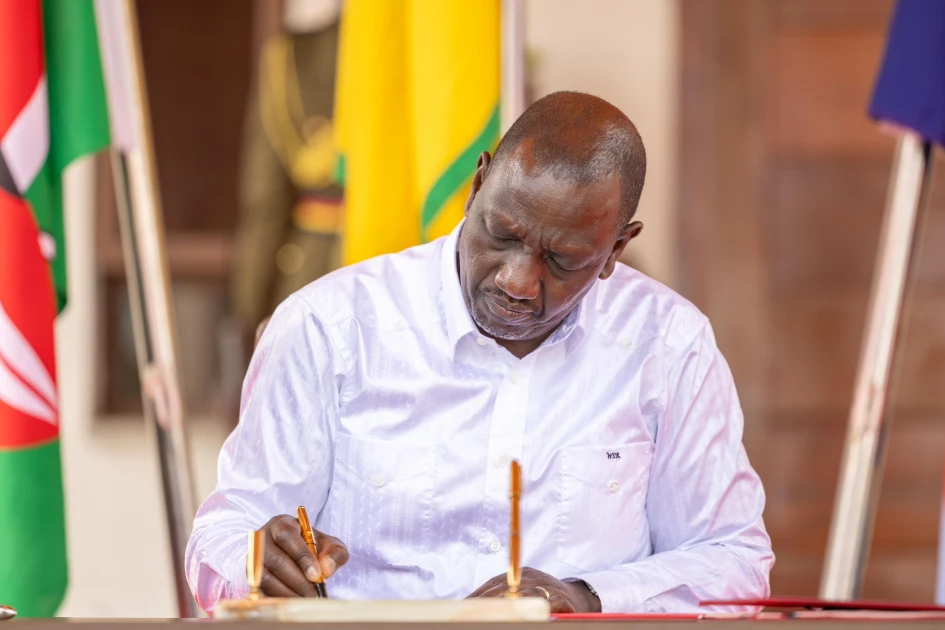Kenya Airways (KQ), the national carrier once seen as a symbol of East African aviation pride, has swung back into the red, posting a staggering KSh 12.15 billion net loss for the half-year ending June 30, 2025.
This dramatic downturn comes barely a year after the airline recorded a modest KSh 513 million profit in the same period of 2024—a brief moment of hope that now seems like a false dawn.
The airline’s performance was battered by a combination of grounded aircraft, global supply chain disruptions, and reduced operational capacity. Key among the setbacks were three grounded Boeing 787-8 Dreamliners, which significantly cut seat availability. Global shortages of critical spare parts and limited engine availability further compounded the problem.
As a result:
Total revenue fell 19% to KSh 74.5 billion from KSh 91.5 billion in 2024.
Passenger numbers dropped 14%, while available seat kilometers declined by 16%.
Operating losses hit KSh 6.2 billion, reversing last year’s KSh 1.3 billion operating profit.
Adding fuel to the fire, fleet ownership costs surged by 29%, driven by lease remeasurements and the addition of an aircraft. Overheads also spiked by 64%, largely due to currency adjustments, compared to last year when forex gains cushioned the blow.
Despite reduced flying activity, which cut some operational expenses, the airline’s margins were hammered. The net margin plummeted to -16.3% from a positive 0.6% a year earlier.
This loss is KQ’s second-largest half-year deficit in the last five years and the third-largest in 13 years. In fact, Kenya Airways has recorded losses in 13 of the last 14 half-year periods. Its biggest recent setback came in 2023, with a KSh 21.7 billion loss.
Even in profitable years, gains have been razor-thin—like KSh 380 million in 2013 and KSh 510 million in 2024.
Not all is bleak. In July 2025, one grounded Dreamliner returned to service, with the other two expected to rejoin the fleet later this year. Kenya Airways is also betting on new routes, expanded destinations, and improved supplier agreements to restore capacity and revenue.
CEO Allan Kilavuka struck an optimistic tone:
“Our focus remains on restoring aircraft availability, containing costs, and pursuing strategic investment to strengthen our financial footing and support long-term growth.”
A major plank of this recovery strategy is the recapitalization plan, targeting at least USD 500 million. These funds would boost liquidity, finance fleet expansion, and diversify revenue streams—critical for an airline that has long relied heavily on passenger travel.
KQ’s woes mirror challenges across the global aviation industry, from geopolitical risks to regulatory burdens and volatile currency markets. The African market, though growing, is highly competitive, and Kenya Airways faces pressure from regional rivals and Middle Eastern carriers that dominate connecting traffic.
Still, demand for air travel in Africa remains resilient, giving the airline a fighting chance—if it can stabilize operations and win back investor confidence.
Kenya Airways is more than an airline; it’s a lifeline for trade, tourism, and regional connectivity. Its financial turbulence raises urgent questions: Can KQ finally turn the corner—or is this another chapter in a long saga of false starts?
For now, the skies remain cloudy. But with strategic execution and recapitalization, the “Pride of Africa” hopes to soar again.



